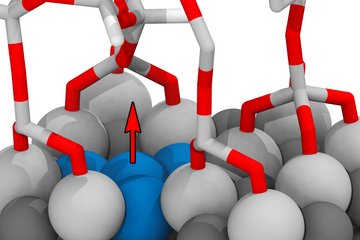All genres
341.
Journal Article
Designed fully lamellar microstructures in a γ-TiAl based alloy: adjustment and microstructural changes upon long-term isothermal exposure at 700 and 800 degrees C. Materials Science and Engineering A-Structural Materials Properties Microstructure and Processing 329-331, pp. 124 - 129 (2002)
342.
Journal Article
On the role of twinning during room temperature deformation of γ-TiAl based alloys. Materials Science and Engineering A: Structural Materials Properties Microstructure and Processing 329-331, pp. 177 - 183 (2002)
343.
Journal Article
Dislocation dynamics in sub-micron confinement: recent progress in Cu thin film plasticity. Zeitschrift für Metallkunde/Materials Research and Advanced Techniques 93 (5), pp. 383 - 391 (2002)
344.
Journal Article
Microstructural stability and creep behavior of a lamellar γ-TiAl based alloy with extremely fine lamellar spacing. Intermetallics 10 (5), pp. 459 - 466 (2002)
345.
Journal Article
Strain rate dependence of the deformation mechanisms in a fully lamellar γ-TiAl-based alloy. Zeitschrift für Metallkunde/Materials Research and Advanced Techniques 93 (3), pp. 180 - 185 (2002)
346.
Journal Article
Plasticity and interfacial dislocation mechanisms in epitaxial and polycrystalline Al films constrained by substrates. Journal of Materials Science & Technology 18 (2), pp. 113 - 117 (2002)
347.
Journal Article
Effects of thickness on the characteristic length scale of dislocation plasticity in Ag thin films. Acta Materialia 49 (17), pp. 3597 - 3607 (2001)
348.
Journal Article
Quasi-crystalline grain-boundary phase in the magnesium die- cast alloy ZA85. Scripta Materialia 45 (5), pp. 517 - 524 (2001)
349.
Journal Article
Creep behavior of γ-TiAl-based alloys with fully lamellar microstructure. Zeitschrift für Metallkunde/Materials Research and Advanced Techniques 92 (8), pp. 1000 - 1004 (2001)
350.
Journal Article
In situ transmission electron microscopy study of thermal-stress-induced dislocations in a thin Cu film constrained by a Si substrate. Materials Science and Engineering A: Structural Materials Properties Microstructure and Processing 309-310, pp. 468 - 472 (2001)
351.
Journal Article
Dynamic observation of Al thin films plastically strained in a TEM. Materials Science and Engineering A: Structural Materials Properties Microstructure and Processing 309-310, pp. 463 - 467 (2001)
352.
Journal Article
Equilibrium amorphous silicon-calcium-oxygen films at interfaces in copper-alumina composites prepared by melt infiltration. Journal of the American Ceramic Society 84 (3), pp. 623 - 630 (2001)
353.
Journal Article
Interface controlled plasticity in metals: dispersion hardening and thin film deformation. Progress in Materials Science 46 (3-4), pp. 283 - 307 (2001)
354.
Journal Article
On the microstructural evolution and phase transformation in a high niobium containing γ-TiAl alloy. Zeitschrift für Metallkunde 91 (11), pp. 950 - 956 (2000)
355.
Journal Article
Computational modeling and experimental study of the deformation behaviour of γ-TiAl based alloys. Advanced Engineering Materials 2 (10), pp. 662 - 666 (2000)
356.
Journal Article
Onset of microstructural instability in a fully lamellar Ti-46.5 at.% Al-4 al.% (Cr,Nb,Ta,B) alloy during short-term creep. Zeitschrift für Metallkunde/Materials Research and Advanced Techniques 91 (9), pp. 755 - 760 (2000)
357.
Journal Article
In-situ transmission electron microscopy study of dislocations in a polycrystalline Cu thin film constrained by a substrate. Applied Physics Letters 77 (8), pp. 1126 - 1128 (2000)
358.
Journal Article
On the origin of acoustic emission during room temperature compressive deformation of a γ-TiAl based alloy. Intermetallics 8 (7), pp. 823 - 830 (2000)
359.
Journal Article
Effect of heat treatments and hot-isostatic pressing on phase transformations and microstructure in a β/B2 containing γ-TiAl based alloy. Scripta Materialia 42 (11), pp. 1065 - 1070 (2000)
360.
Journal Article
Microstructure of alumina composites containing niobium and niobium aluminides. Journal of the American Ceramic Society 83 (2), pp. 397 - 402 (2000)











